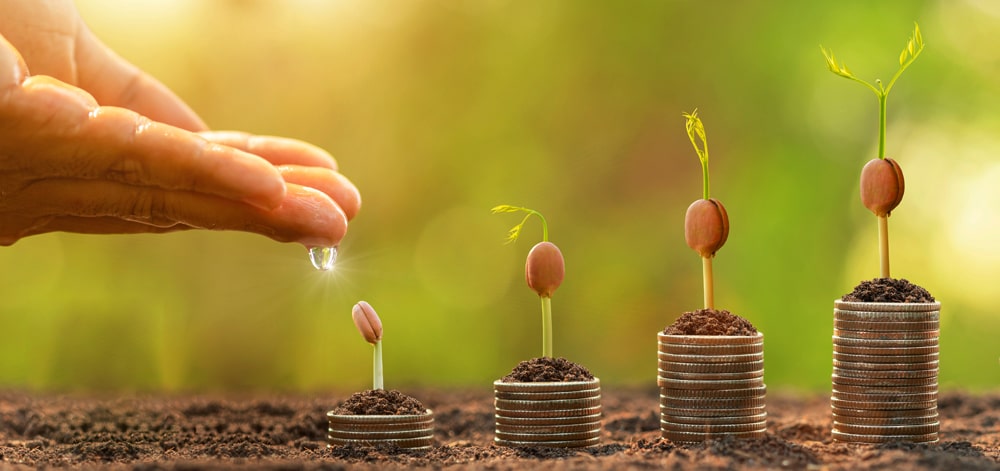
When it comes to plant growth, you want to keep an eye on your soil’s pH levels. The problem is that not too many gardeners understand what soil pH is and why they should closely monitor it. Thankfully, you don’t need a science degree to understand the basics of soil pH and how it influences plant growth.
The pH level (potential hydrogen) measures how alkaline or acidic your soil is. This affects how the plants can access the nutrients that are present in the soil. In most cases, the signs of nutrient deficiency in plants can be attributed to an incorrect pH balance. The desirable pH levels for optimum plant growth vary among crops, but most crops grow best at around the 6.0 to 7.0 range while others thrive under slightly acidic conditions.
The soil becomes acidic when basic elements such as magnesium, potassium, calcium, and sodium from soil colloids are replaced by hydrogen ions. Soils that form under high rainfall conditions are more acidic than those that form in arid environments. Meanwhile, soils that form under low rainfall conditions tend to be basic, with pH levels of around 7.0.
Testing the pH levels of your soil
As a gardener, it’s important that you know how to test your soil’s pH to determine whether or not you’ll need to correct a pH imbalance. The easiest way test soil pH is to pick up a testing kit. Such kits are reliable, affordable, and very straightforward to use. While some kits may operate differently, the testing process is roughly the same by digging a small hole into the soil that’s 10 to 15 centimetres deep.
Set aside any stones or twigs, then fill the hole with distilled water. Do not use any other type of water as distilled water has a neutral pH level which is key to identifying your soil’s pH accurately. Insert the test kit into the muddy water hole and wait for about a minute to get a reading.
If the pH registers lower than 7.0, that means your soil is acidic. If it’s above 7.0, then your soil is alkaline. Most plants thrive in soil with neutral pH levels of around 6.5 to 7.0 so if these numbers come out from the test kit, then your soil is in good shape. You’ll have to make a few adjustments if your soil comes out acidic or alkaline which we’ll further discuss down below.
Correcting your soil’s pH
If your soil falls on the acidic side (below 7.0), we recommend adding dolomite lime at a rate of approx. 100gm/m 2 for sandy soil. For heavier loam, adding 200gm/m 2, and up to 300 – 400gm/m 2 in heavy clay is ideal. It’s better to add in dolomite lime gradually over several months rather than dumping all of them which can shock your plants and kill them.
While akaline soils may be a bit more difficult to fix, it’s not entirely out of the realm of possibility. A quick way to correct an alkaline soil is to add sulphur, or a sulphate such as iron sulphate, at a rate of approx. 25gm/m 2 for sandy soil. For heavier loam, 50gm/m 2, and up to 100gm/m 2 in heavy clay is ideal. Iron sulphate can be added at approximately double the rates mentioned above. Just like adding dolomite lime, you want to introduce iron sulphate to the soil gradually and water it in very well since it does increase the soil’s salinity as well.
Oftentimes alkalinity problems can be attributed to factors such as cement/limestone building structures or limestone soils. In some cases, problematic garden beds hide a dark secret – builders rubble (cement and plaster waste) buried deep in the soil and continue to leach lime as time passes.
A temporary fix to alkaline soil is to add sulphur. Adding organic matter tends to be beneficial for the soil in the long term, particularly with materials that have a naturally acidic nature like sawdust and pine needles.
To counteract alkaline soils, we also recommend using a high carbon soil amendment like biochar. Biochar has a naturally low pH and can help stabilise the pH levels of your soil. Plus it has many other benefits on nutrient and water holding to help supplement plant growth. With biochar, you can improve your soil’s fertility and correct any pH imbalances with an alkaline soil.
You may have come across advertisements and promotions in the Eastern states that routinely advocate adding lime to garden soil. Keep in mind that soil types in the West vary greatly from those in the East, so before you add lime to your garden, make sure to test out your soil first to determine whether or not your garden truly needs it.
Lastly, adding organic matter and having a healthy soil microbial life can resist the change in pH levels, meaning plants are still able to access vital nutrients. Observing how the plants are growing along with routine soil testing is key to knowing whether you have an incorrect pH balance in your soil.

